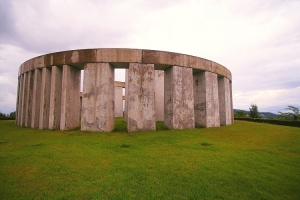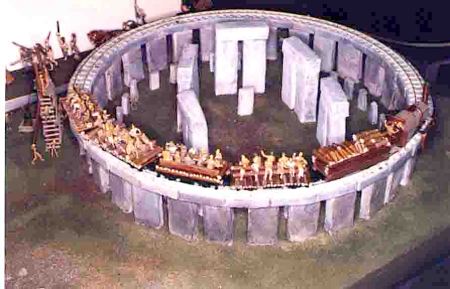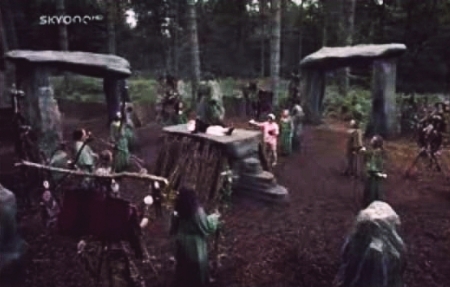 photo by Paula of The Cookie Shop, with permission
photo by Paula of The Cookie Shop, with permission
Doesn’t this look like a party? Today we celebrate our 200th post on Clonehenge and our biggest month ever, stat-wise, with this colourful and yummy-looking Stonehenge all the way from Brazil. If we could we would send out a dessert like this to everyone who has supported us, contributed to the blog, or just read it over the last 9 months. Many thanks to all!
We’re not sure what possessed Paula to rebuild Stonehenge with the leftovers of her candy, but she created a neat little beginner’s henge, a circle of trilithons with a couple of fallen uprights. Nothing in the form that we haven’t seen before, but it just goes to show that the mysterious force that makes people build Stonehenge replicas hasn’t waned since this blog began. We encourage playing with your food!
And, yes, we’re back in South America. This is our first Portuguese-speaking henge. Doesn’t it seem like people are more colourful in Brazil? It must be that yerba maté they drink. Score: 6½ druids. Thank you for helping us celebrate! Many happy returns to us all.

 photo by Hatsuki NISHIO, with permission
photo by Hatsuki NISHIO, with permission The replica itself is interesting, as astronomy-oriented ones often are. The bluestones are missing, and the uprights around the outside vary greatly in width, being very narrow and close together in some sections of the circle, as you can see above, while others are more similar in proportion to those in the original. The curve of the lintels in the inner trilithons is also noteworthy.
The replica itself is interesting, as astronomy-oriented ones often are. The bluestones are missing, and the uprights around the outside vary greatly in width, being very narrow and close together in some sections of the circle, as you can see above, while others are more similar in proportion to those in the original. The curve of the lintels in the inner trilithons is also noteworthy.

 from Youtube
from Youtube
 If you had asked us, we would not have guessed that candy corn would stand up like that. The ones without legs, we mean. We know the others can stand up–and even dance!
If you had asked us, we would not have guessed that candy corn would stand up like that. The ones without legs, we mean. We know the others can stand up–and even dance!
 The castle is an interesting construction. You can see all of it
The castle is an interesting construction. You can see all of it  photo by
photo by 
 photo by
photo by